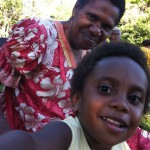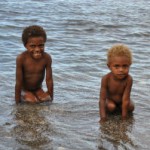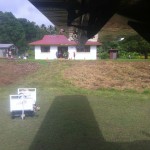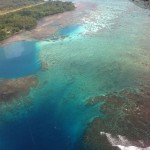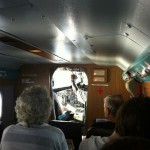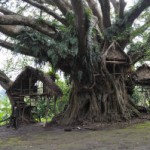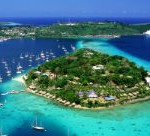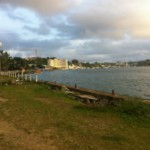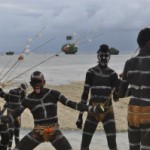Vanuatu in numbers
Vanuatu, officially the Republic of Vanuatu (Bislama: Ripablik blong Vanuatu), is an Oceanianisland nation located in the South Pacific Ocean. The archipelago, which is of volcanic origin, is some 1,750 kilometres (1,090 mi) east of northern Australia, 500 kilometres (310 mi) northeast of New Caledonia, 800 kilometres west of Fiji, and 170 kilometres southeast of the Solomon Islands, near New Guinea. Vanuatu consists of 83 islands, most of which are inhabited. The distance from the most northern to the most southern island is approximately 1300 kilometres.
With a population of approximately 252,000 (from the Vanuatu Statistics Bureau 2013), Vanuatu boasts 113 distinct languages and innumerable dialects. This makes it one of the most culturally diverse countries on earth. Vanuatu has three official languages: Bislama (pidgin English), French and English.
History
This amazing diversity is a result of 3,000 years of sporadic migration from many Pacific countries. Although most settlers arrived from Melanesia, the larger built, lighter skinned Polynesians also settled in the islands. As with all nations and peoples, over millennia these different groups came into both peaceful and violent contact, sometimes intermarrying and sometimes having losing their cultural identity to a more dominant group. Each successive wave of immigrants carried with them all the tools needed to live. Food crops, tree seedlings and their most important animal – the pig. This animal is probably the most significant aspect of life in Vanuatu, for it symbolises not simply a source of protein, it is the cornerstone of their ritual life, a token of wealth and power upon which entire societies are founded. In the 1880s France and the United Kingdom claimed parts of the country, and in 1906 they agreed on a framework for jointly managing the archipelago as the New Hebrides through a British–French Condominium. An independence movement arose in the 1970s, and the Republic of Vanuatu was founded in 1980.
Climate
With such a large north-south area, Vanuatu has all the tropical variances possible. From hot and humid in the north, to mild and dry in the south. The Capital Port Vila on Efate can expect 27°C in July to 30°C in January. Nights can drop to 12°C. Humidity from December to February is around 82% and 70% around July. Rainfall from January to April is around 300mm per month – for the rest of the year around 200mm per month. The Banks Islands in the top North can receive above 4,000mm of rain in a year, yet the southern islands may receive less than 2,000mm.
Happiest place on the planet
Vanuatu is a beautiful country, inhabited by beautiful, lovely and proud people. Vanuatu was rated as the happiest place in the world in 2006, per Happy Planet Index. Wherever you go in Vanuatu, you will always meet gentle people who are happy to meet you and will greet you with a big smile.
Kava
Although Kava is not a food crop, it is a significant part of Vanuatu cultural society. Kava is a derivative of the pepper tree family. Traditionally it is cut and chewed into a pulp, then spat into a bowl. But nowadays Kava is usually cut to pulp in a mill or on a wooden board, using a piece of coral. The mushy pulp is squeezed and the resultant liquid drunk in a coconut shell. On some islands, both men and women may drink kava as an evening soporific after a hard day’s work. It looks like dirty brown-grey water. It does not taste nice, but when in Vanuatu, do as the Ni-Van. After a few times you enjoy the leisurely evening in the nakamal, where people are talking quietly, eating little yummy bites and families sit together.
(sources Wikipedia, Vanuatu travel guide)
(All photo’s on this website are made during our travels through Vanuatu, except for air-photo of Port Vila)
- Airport of Gaua
- Erakor island near Port Vila
- Torres islands
- Twin Otter of Air Vanuatu
- Kamilisa bungalow Torres Islands
- Nakamal on Tanna
- Port Vila, Iririki island
- Port Vila
- Ra island, snake dance
